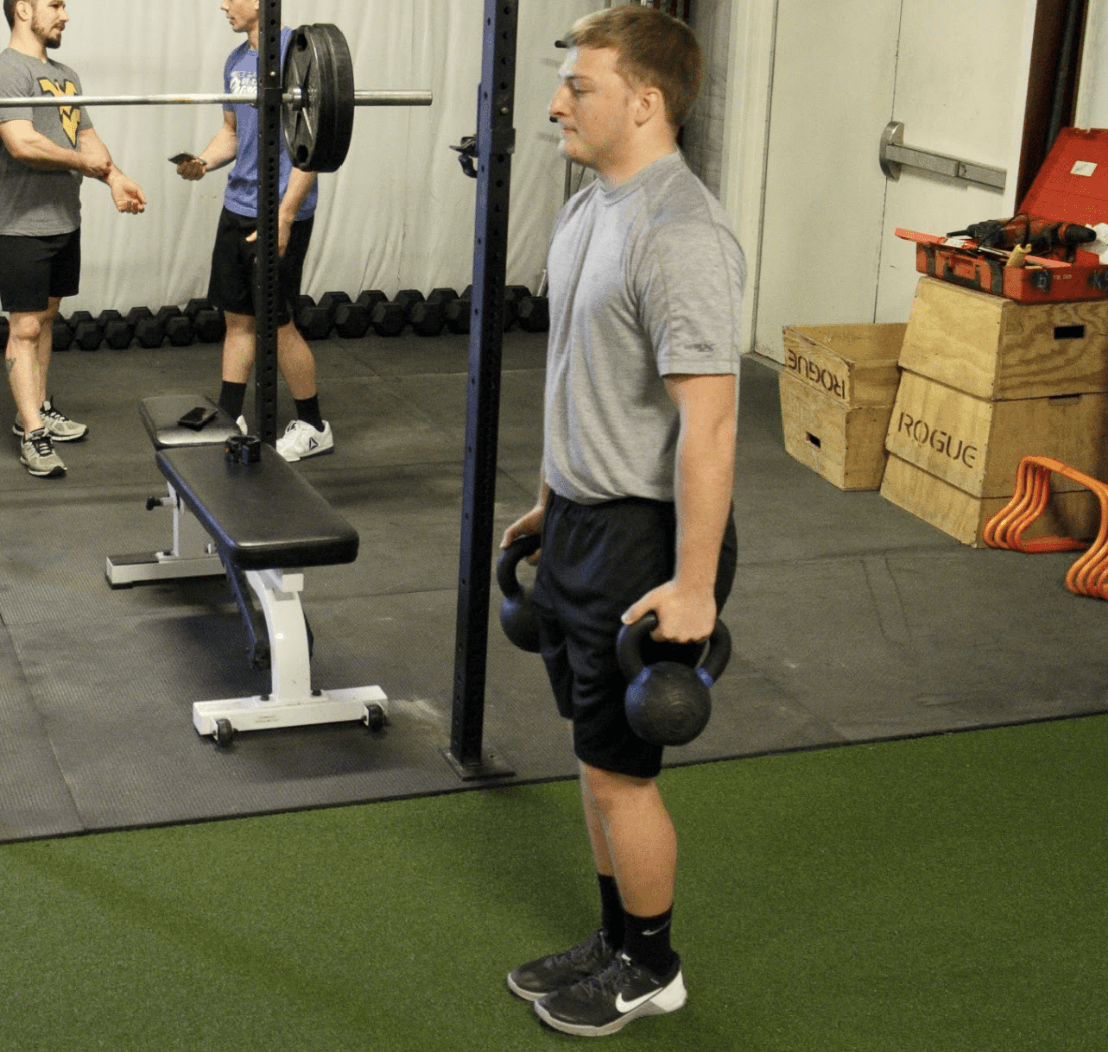Want to Boost Performance and Beat Back Pain? Strengthen Your Trunk
Recovery | Strength & ConditioningABOUT THE AUTHOR

Phil White
Phil White is the co-author of Waterman 2.0 (with Dr. Kelly Starrett), The 17 Hour Fast (with Dr. Frank Merritt), Unplugged (with Dr. Andy Galpin and Brian Mackenzie) and Game Changer (with Fergus Connolly). He writes for Train Heroic, HANAH, Momentous, XPT, Onnit, StrongFirst, TRX, McGregor FAST, and other leaders in human performance. In a previous life, Phil was nominated for a screenwriting Emmy. He lives with his wife and two sons in the mountains of Colorado. Connect with Phil at www.philwhitebooks.com
If I see the term “core workout” one more time, I swear I’m going to scream. An entire cottage industry of classes, DVDs, and Instagrammers have sprung up around the phrase. Yet when you peak inside the world of high performance, you see that none of the most highly respected coaches are following the same gimmicks as the fitness fad crowd because their athletes need to actually be physically capable, not merely feel like someone has taken a bat to their ribcage after another “core blast” session. So if you’re not meant to be doing endless crunch variations, weird little pulsing movements, and twist upon twist to get “the burn,” then what should you do instead?
Before we get ahead of ourselves to the answer, let’s ask another question: why do you need a strong trunk in the first place? There are multiple reasons. Above all, we must protect ourselves as a living organism and in doing so, we need to make sure our spine, which is the body’s superhighway for the nervous system, is armored up like Black Panther in his impervious suit. This means that not only must we move in a safe and sustainable manner, but we also need to have sufficient strength in the muscles of the abdomen and lower back and structures like the thoracodorsal fascia to support a stable spine. From a survival of the organism perspective, the trunk also houses your major organs, including the heart, lungs, and liver. These also need to be protected.
Additionally, the trunk connects the “big engines” of the hips and shoulders, which are responsible for generating force for most major athletic movements. If the section of our body in between is not sufficiently strong and/or we lack requisite motor control, then we will inevitably lose some of the power these engines produce. It will also be difficult to express strength in compound movements involving both the upper and lower body if there’s a cream puff in the middle. Finally, sports and everyday life necessitate moving across multiple planes of motion: sagittal, frontal, and transverse. These require us to resist rotation and/or create it. Muscular strength is vital here, too, as it’s needed to either offer stability and/or generate momentum, all while protecting the spinal column, which becomes vulnerable when twisting, as up to 50 percent of its supporting structures disengage.
// Here are several tried and tested methods for checking all these boxes and building a stronger trunk:
The big two: squats & deadlifts
It’s arguable that many athletes spend far too much time trying to “isolate their core,” when in reality, the trunk’s primary function is to act as a bridge between the upper and lower body and as a lightning rod between the hips and shoulders. It’s far more functional and time-efficient to instead perform compound exercises that require the movement of multiple motor segments, joints, and limbs and build trunk strength as well.
Enter the squat and deadlift, two exercises that have been staples in weight rooms for time immemorial for good reason: they build total body strength and power like no other exercises. If you’re bracing correctly, your trunk should be rock solid throughout both movements, as the bar moves up and down (or vice versa). To ensure this, squeeze your abs and then take a nasal breath in. Hold as you lower yourself to the bar (deadlift) and go down into the hole (in the squat), then exhale forcefully as you stand up (both lifts). Also squeeze your glutes hard to maintain a solid relationship between your hips and lumbar spine.


hold!
This isn’t just William Wallace’s command in one of the most striking battlefield scenes in Braveheart. Holding a braced position is one of the best ways to train trunk stability. The simplest starting point is the humble plank. Yes, this might seem like an obvious choice, but as my co-author Fergus Connolly quotes the great, late sprint coach Charlie Francis as saying in 59 Lessons, “The trouble with common sense is that it’s not that common.” Once you can hold a traditional plank for two minutes, consider rolling onto your side, pushing yourself up on one elbow, and staying there for a while. When that becomes easy, you can move onto the starfish variation, by which you raise the upper arm and leg so it looks like you’re in a lying jumping jack stance. Another isometric exercise that works wonders is the bird dog. To do it, get into the plank position, lift one arm and the opposite leg until they’re parallel to the floor, and hold the position for a minute. Then rest and repeat.
Chop wood & carry water
Or, in this case, do woodchoppers and carry iron. To develop rotational power, grab a medicine or slam ball, raise it above your head, and chop it down to your left hip. Return to the starting position and repeat on the right. Now we move onto an underrated function of the trunk: resisting rotation and creating stability. To develop this ability, there’s nothing better than carrying weights by your side or overhead. Bonus: carries of all kinds also help enhance shoulder integrity, improve grip strength, and allow you to get some extra sneaky lower body work in (your legs provide the locomotion element, after all).
Getting started with loaded carries couldn’t be simpler. For the farmer’s walk, grab two heavy dumbbells or kettlebells, stand up, and start walking. Make sure your gaze is fixed straight ahead, and your shoulder blades are pulled back and down. To challenge your trunk stability even more, switch to a one-handed suitcase carry variation. And to up your carry game, literally, walk with one or both arms overhead. For this iteration, imagine a straight line between your wrist, elbow, shoulder, and hip.

get up, stand up
Let’s now go a little Bob Marley. It’s arguable that the Turkish get-up is the king of all trunk strength exercises. Why? Because it combines motion and stability, asks you to switch between multiple movement planes, uses an overhead component to raise your center of gravity, and requires transitioning between seven different positions on the way up, before reversing the sequence on the way back down. Start off with a bodyweight variation to nail down your technique, and then use a lighter weight than you think you can handle because many people underestimate the stability demands of the exercise.
Once you’ve got your form down (if you really want to nail it, seek out a StrongFirst instructor), you can combine get-ups with kettlebell swings in a program such as Pavel Tsatsouline’s classic Simple and Sinister, as well as using get-ups as an efficient standalone exercise when time is of the essence. You can also try adding in a three to five second pause at each stage of the get-up to increase the time under tension and exaggerate the motor control element of the lift.
Are you a better coach after reading this?
More coaches and athletes than ever are reading the TrainHeroic blog, and it’s our mission to support them with usefull training & coaching content. If you found this article useful, please take a moment to share it on social media, engage with the author, and link to this article on your own blog or any forums you post on.
Be Your Best,
TrainHeroic Content Team
HEROIC SOCIAL
HEROIC SOCIAL
TRAINING LAB
Access the latest articles, reviews, and case studies from the top strength and conditioning minds in the TH Training Lab

